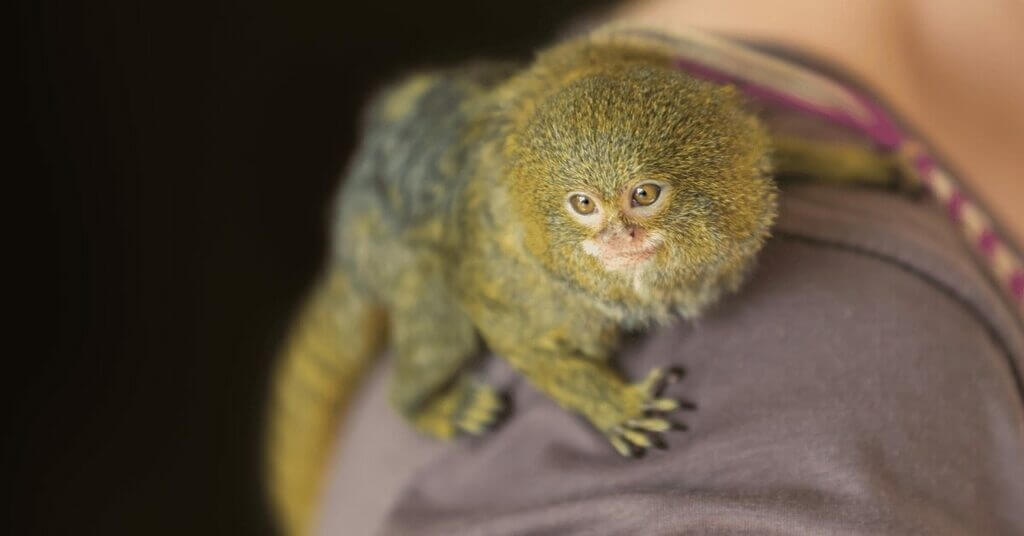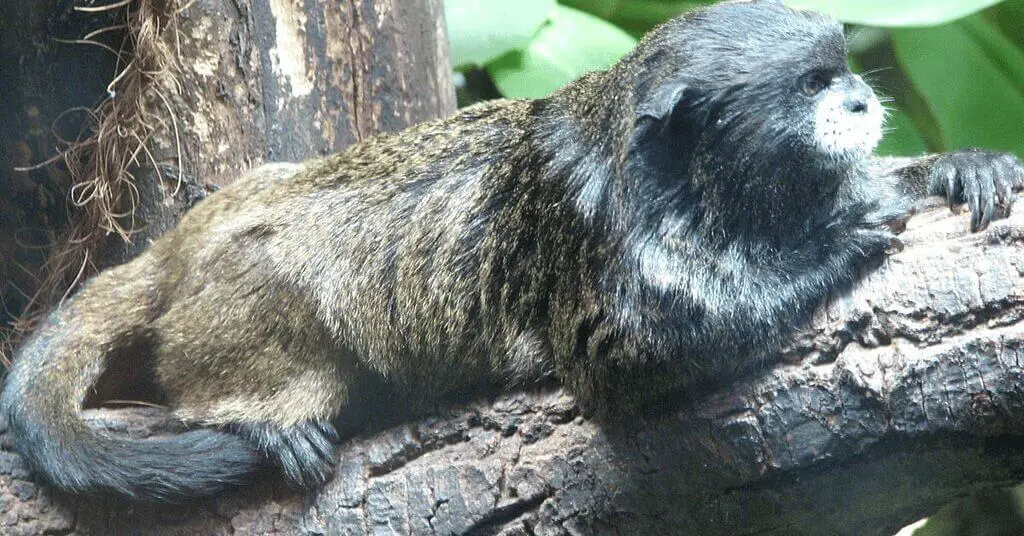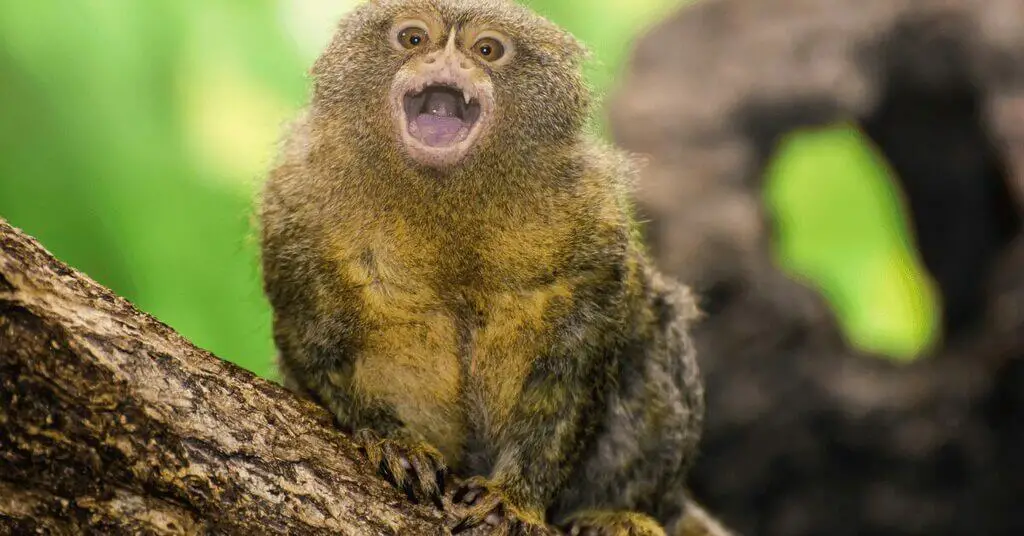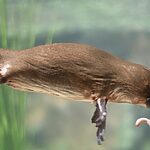Discover the fascinating world of the smallest monkey breeds on Earth. From the tiny pygmy marmoset to the enigmatic tarsier, these diminutive primates are true wonders of the natural world. Despite their small size, these monkeys play crucial roles in their ecosystems and possess unique adaptations that allow them to thrive in their respective habitats.
In this article, we will explore the physical characteristics, behaviors, and conservation challenges faced by some of the most remarkable small breeds of monkeys, showcasing the incredible diversity and resilience of these pint-sized primates. Get ready to be amazed by the world of small monkey breeds.
Quick Answer: The smallest monkey breeds in the world include the pygmy marmoset, tarsiers, Roosmalen’s dwarf marmoset, silvery marmoset, common marmoset, and Graells’s tamarin. These tiny primates are found in South America and Southeast Asia.
Key Takeaways:
- Pygmy marmosets, the world’s smallest monkeys, have specialized teeth for gouging holes in tree bark to feed on sap and gum.
- Tarsiers, known for their enormous eyes and incredible leaping abilities, are the only entirely carnivorous primates.
- Many small monkey species face significant threats from habitat loss, fragmentation, hunting, and the illegal pet trade.
List of the Smallest Monkey Breeds in the World
Across the globe, there exists a fascinating array of monkey species, each with their own unique characteristics, habitats, and behaviors. Among these diverse primates, some stand out for their remarkably small size.
1. Pygmy Marmoset (South America) – 4.6 to 6.2 inches (12 to 16 cm)

The pygmy marmoset, hailing from the Amazon rainforest, holds the title of the world’s smallest monkey species. These tiny primates weigh a mere 3.5 ounces (100 grams) and measure just 4.6 to 6.2 inches (12 to 16 cm) in length, making them smaller than many rodents.
Physical Characteristics and Size
Pygmy marmosets are truly tiny, with adults weighing between 3.5 to 4.9 ounces (100 to 140 grams) and measuring 4.6 to 6.2 inches (12 to 16 cm) in body length.
Their soft, silky fur is a mottled mix of browns, greys, and yellows, providing excellent camouflage in the dappled light of the forest canopy. These miniature monkeys also sport a long, non-prehensile tail that can grow up to 8 inches (20 cm), aiding in balance as they navigate through the treetops.
One of the most distinctive features of the pygmy marmoset is their specialized dentition. Their sharp, pointed teeth are perfectly adapted for gouging holes in tree bark to stimulate the flow of sap, which forms a major part of their diet.
Habitat and Distribution
Pygmy marmosets are found exclusively in the Amazon rainforest, distributed across parts of Brazil, Colombia, Ecuador, and Peru. They inhabit both primary and secondary forests, preferring areas with a high diversity of tree species that provide ample food sources and nesting sites.
These arboreal monkeys spend most of their lives high in the forest canopy, rarely descending to the ground. Their tiny size allows them to navigate through the dense foliage with ease, as they forage for food and evade potential predators.
Diet and Feeding Habits
The diet of the pygmy marmoset is highly specialized, consisting primarily of tree sap and gum. Using their sharp teeth, they gouge holes in the bark of certain tree species, such as those in the genus Cecropia, to stimulate the flow of nutrient-rich sap. They then lick the sap from the wounds, consuming up to half their body weight in this sticky substance each day.
In addition to sap, pygmy marmosets also feed on a variety of insects, including grasshoppers, crickets, and caterpillars. Occasionally, they may supplement their diet with small amounts of fruit, nectar, and even bird eggs.
Their small size and low metabolic rate allow them to survive on this nutrient-poor diet, which would be insufficient for larger primates.
Social Structure and Behavior
Pygmy marmosets live in small, tightly-knit family groups consisting of a breeding pair and their offspring. These groups typically number between 2 to 9 individuals, with the adult pair forming a monogamous bond.
Both male and female pygmy marmosets participate in the care of their young, carrying them on their backs and sharing food. The infants are weaned at around 3 months of age but may remain with their family group for up to 2 years before dispersing to establish their own territories.
Communication within the group is maintained through a variety of high-pitched trills, whistles, and chirps. These vocalizations serve to keep the family members in contact, signal alarm, and defend their territory from neighboring groups.
Pygmy marmosets are also known to engage in social grooming, a behavior that helps strengthen bonds between individuals and maintains the health of their fur.
2. Tarsiers (Southeast Asia) – 4-6 inches long (10-15 cm)
Tarsiers are a unique and ancient group of primates found in the tropical forests of Southeast Asia. These small, nocturnal creatures are known for their enormous eyes, long hind limbs, and incredible leaping abilities.
Physical Characteristics and Size
Tarsiers are among the smallest primates in the world, with adults typically measuring between 4 to 6 inches (10 to 15 cm) in body length and weighing a mere 2.8 to 5.6 ounces (80 to 160 grams). Their soft, dense fur ranges in color from greyish-brown to buff, depending on the species.
The most striking feature of the tarsier is their enormous eyes, which are as large as their entire brain. These huge eyes provide excellent night vision, allowing them to navigate and hunt in the darkness of the forest. Tarsiers also possess elongated hind limbs and feet, which enable them to make incredible leaps of up to 5 meters (16 feet) between trees.
Habitat and Distribution
Tarsiers are found exclusively in the tropical rainforests of Southeast Asia, including the islands of Indonesia, Malaysia, the Philippines, and Brunei. They prefer dense, undisturbed forests with a high diversity of tree species, as these provide ample food sources and nesting sites.
These arboreal primates spend most of their lives clinging vertically to tree trunks and branches, rarely descending to the ground. However, their habitat is increasingly threatened by deforestation and fragmentation, as vast areas of rainforest are cleared for agriculture, logging, and human settlement.
Diet and Feeding Habits
Tarsiers are the only entirely carnivorous primates, feeding exclusively on a variety of small animals. Their diet primarily consists of insects such as crickets, grasshoppers, and beetles, but they also hunt lizards, birds, and even small mammals like bats and rodents.
Using their keen eyesight and acute hearing, tarsiers locate their prey in the dark and pounce with lightning speed. They grasp their prey with their long, slender fingers and consume it whole, bones and all.
As predators, tarsiers play an important role in controlling insect populations within their forest habitats.
Social Structure and Behavior
Tarsiers are primarily solitary creatures, with individuals occupying and defending their own territories. Males and females typically only come together briefly for mating, after which the female assumes sole responsibility for rearing the young.
Communication between tarsiers is maintained through a variety of vocalizations, including high-pitched whistles, trills, and clicks. These calls serve to advertise their presence, defend their territories, and locate potential mates.
Tarsiers are also known for their unique locomotion, which involves vertical clinging and leaping. They can rotate their heads nearly 180 degrees in either direction, allowing them to survey their surroundings without moving their bodies.
3. Roosmalen’s Dwarf Marmoset (South America)

Roosmalen’s dwarf marmoset is a tiny monkey species found in the Amazon rainforest of Brazil. It was discovered relatively recently, in 1998, and is still one of the least-studied primates in the world.
Physical Characteristics and Size
Roosmalen’s dwarf marmoset is one of the smallest primates in the world, with adults measuring around 15 to 18 cm (6 to 7 inches) in body length and weighing approximately 100 to 150 grams (3.5 to 5.3 ounces). Their soft, fluffy fur is a mix of black, brown, and white, with distinctive markings on their head and face. They have round, expressive eyes and a small, pointed muzzle, giving them an endearing, almost toy-like appearance.
Habitat and Distribution
This species is found exclusively in the lowland rainforests of the Amazon basin, primarily in the state of Amazonas in Brazil. They inhabit dense, primary forest with a high diversity of tree species, particularly those that provide sap and gum, which form a major part of their diet.
Like other marmosets, Roosmalen’s dwarf marmoset is an arboreal species, spending most of its life in the treetops. However, their habitat is increasingly under threat from deforestation and fragmentation, as vast areas of rainforest are cleared for agriculture and human settlement.
Diet and Feeding Habits
Although little is known about the specific diet of Roosmalen’s dwarf marmoset, it is believed to be similar to that of other marmoset species. They likely feed primarily on tree sap and gum, which they access by gouging holes in the bark of certain tree species with their sharp, specialized teeth.
In addition to sap and gum, they probably also consume a variety of insects, such as caterpillars, butterflies, and spiders, to supplement their diet. They may also occasionally feed on fruit, nectar, and other plant materials.
Further research is needed to fully understand the dietary habits of this elusive species.
Social Structure and Behavior
The social structure of Roosmalen’s dwarf marmoset is still not well understood, but it is thought to be similar to that of other marmosets. They likely live in small, family groups consisting of a breeding pair and their offspring.
Like other marmosets, they probably communicate through a variety of vocalizations, including whistles, trills, and high-pitched chirps. These calls serve to maintain contact between family members, signal alarm, and defend their territory from neighboring groups.
Scent marking is also likely to be an important behavior for this species, as it is for other marmosets. By rubbing their scent glands on branches and other surfaces, they can communicate their presence and mark the boundaries of their territory.
However, more research is needed to fully understand the social dynamics and behavior of this fascinating, little-known primate.
4. Silvery Marmoset (South America) – 7 to 11 inches long (18 – 28cm)
The silvery marmoset is a small, distinctive monkey found in the Atlantic Forest of southeastern Brazil. Known for its striking, silvery-grey fur, this species is a unique and fascinating member of the marmoset family.
Physical Characteristics and Size
Silvery marmosets are small primates, with adults typically measuring between 7 to 11 inches (18 to 28 cm) in body length and weighing around 300 to 400 grams (10.5 to 14 ounces). As their name suggests, they have soft, fluffy fur that is predominantly silvery-grey in color, with darker markings on their head and face.
Like other marmosets, they have a long, non-prehensile tail that can grow up to 12 inches (30 cm) in length, providing balance as they move through the trees. They also possess sharp, specialized claws that allow them to cling vertically to tree trunks and branches.
Habitat and Distribution
Silvery marmosets are found exclusively in the Atlantic Forest of southeastern Brazil, particularly in the states of Rio de Janeiro, São Paulo, and Minas Gerais. They inhabit dense, humid forests with a high diversity of tree species, preferring areas with ample sources of sap and gum.
However, like many other species in the Atlantic Forest, silvery marmosets are increasingly threatened by habitat loss and fragmentation. Much of their forest home has been cleared for agriculture, logging, and human settlement, leaving them with fewer places to live and find food.
Diet and Feeding Habits
Like other marmosets, silvery marmosets have a specialized diet that consists primarily of tree sap and gum. They use their sharp, pointed teeth to gouge holes in the bark of certain tree species, stimulating the flow of sap which they then consume.
In addition to sap and gum, silvery marmosets also feed on a variety of insects, such as caterpillars, butterflies, and spiders. They may also occasionally eat fruit, flowers, and other plant materials.
Their small size and low metabolic rate allow them to survive on this nutrient-poor diet, which would be insufficient for larger primates.
Social Structure and Behavior
Silvery marmosets live in small, family groups consisting of a breeding pair and their offspring. These groups typically number between 2 to 8 individuals, with the adult pair forming a monogamous bond.
Both males and females participate in the care of their young, carrying them on their backs and sharing food. The infants are weaned at around 2 months of age but may remain with their family group for up to a year before dispersing to establish their own territories.
Communication within the group is maintained through a variety of vocalizations, including whistles, trills, and high-pitched chirps. These calls serve to keep the family members in contact, signal alarm, and defend their territory from neighboring groups.
Silvery marmosets are also known to engage in social grooming, a behavior that helps strengthen bonds between individuals and maintains the health of their fur. They may also use facial expressions, such as lip-smacking and tongue-flicking, to communicate with each other.
5. Common Marmoset (South America) – 7.1 to 8 inches long (19 – 20cm)
The common marmoset is a small, adaptable monkey species found in the northeastern regions of Brazil. Despite their name, these primates are anything but ordinary, with a range of fascinating physical and behavioral traits.
Physical Characteristics and Size
Common marmosets are small primates, with adults typically measuring between 7.1 to 8 inches (19 to 20 cm) in body length and weighing around 250 to 350 grams (8.8 to 12.3 ounces). They have soft, fluffy fur that is a mix of grey, black, and white, with distinctive white tufts on their ears.
One of the most striking features of the common marmoset is their expressive, round eyes, which are surrounded by a naked, flesh-colored face. They also have a long, non-prehensile tail that can grow up to 10 inches (25 cm) in length, aiding in balance as they navigate through the treetops.
Habitat and Distribution
Common marmosets are found in a variety of habitats across northeastern Brazil, including forest edges, secondary forests, and even human-modified environments such as plantations and urban parks. They are particularly abundant in the states of Bahia, Pernambuco, and Alagoas.
This adaptability has allowed common marmosets to persist in areas where other primate species have declined or disappeared. However, they are still threatened by habitat loss and fragmentation, as well as the illegal pet trade, which targets these small, cute monkeys for sale on the black market.
Diet and Feeding Habits
Like other marmosets, common marmosets have a specialized diet that consists primarily of tree sap and gum. They use their sharp, pointed teeth to gouge holes in the bark of certain tree species, stimulating the flow of sap which they then consume.
In addition to sap and gum, common marmosets are opportunistic feeders that will eat a wide variety of other foods, including fruit, flowers, insects, and even small vertebrates such as lizards and frogs. This adaptability allows them to survive in a range of habitats and exploit different food sources depending on availability.
Social Structure and Behavior
Common marmosets live in small, family groups consisting of a breeding pair and their offspring. These groups typically number between 3 to 15 individuals, with all members participating in the care of the young.
Breeding pairs form monogamous bonds and cooperate in raising their infants, which are born as twins. The father and older siblings help carry the babies and share food with them, allowing the mother to invest more energy in producing milk.
Communication within the group is maintained through a complex array of vocalizations, facial expressions, and scent marking. Common marmosets use a variety of calls to keep in contact, signal alarm, and defend their territory, while facial expressions such as lip-smacking and tongue-flicking serve to strengthen social bonds.
Scent marking is also an important behavior for this species, with individuals rubbing their scent glands on branches and other surfaces to communicate their presence and mark the boundaries of their territory.
6. Graells’s Tamarin (South America) – 7.8 to 12 inches long (19 to 30cm)

Graells’s tamarin, also known as the black-chinned tamarin, is a small, striking monkey found in the Amazon rainforest of Bolivia, Brazil, and Peru. With their distinctive black and white fur and expressive faces, these primates are a fascinating and little-known species.
Physical Characteristics and Size
Graells’s tamarins are small monkeys, with adults measuring between 7.8 to 12 inches (19 to 30 cm) in body length and weighing around 300 to 400 grams (10.5 to 14 ounces). They have a striking black and white coloration, with a pure white chest and belly contrasting sharply with their black back, limbs, and tail.
Conservation Status and Threats
Despite their small size and elusive nature, many of the world’s smallest monkey species face significant threats to their survival. Habitat loss, fragmentation, and degradation are among the most pressing concerns, as these primates rely on specific forest types and resources to thrive. As human populations expand and encroach upon their habitats, these tiny monkeys find themselves with fewer places to call home.
Deforestation and Habitat Loss
Deforestation, driven by logging, agriculture, and urbanization, is a major threat to small monkey populations worldwide. As forests are cleared for timber, converted into farmland, or developed for human settlement, these primates lose access to the food, shelter, and social networks they need to survive. The Atlantic Forest of Brazil, home to the silvery marmoset and other endemic species, has been reduced to less than 10% of its original extent, putting immense pressure on the animals that depend on it.
Similarly, the Amazon rainforest, which hosts a diverse array of small monkey species, including the pygmy marmoset and Roosmalen’s dwarf marmoset, is under constant threat from deforestation. As the demand for resources such as timber, oil, and minerals grows, vast swaths of this incredible ecosystem are being destroyed, fragmenting habitats and isolating populations.
Habitat Fragmentation
Even when forests are not completely cleared, habitat fragmentation can have severe consequences for small monkey populations. As contiguous forests are divided into smaller, isolated patches, primates may struggle to find mates, access food resources, or maintain their social structures. This fragmentation can lead to inbreeding, reduced genetic diversity, and ultimately, local extinctions.
The tarsiers of Southeast Asia are particularly vulnerable to habitat fragmentation, as they require dense, undisturbed forests to thrive. As their habitats are divided by roads, plantations, and human settlements, these tiny primates find it increasingly difficult to navigate the landscape and maintain viable populations.
Hunting and Pet Trade
In addition to habitat loss and fragmentation, some small monkey species face threats from hunting and the illegal pet trade. Although their tiny size may make them seem like an unlikely target for hunters, some species, such as the tarsiers, are pursued for their meat, traditional medicines, or as novelty items.
The common marmoset, known for its adaptability and endearing appearance, has fallen victim to the pet trade in recent years. These intelligent, social creatures are often captured from the wild and sold as exotic pets, enduring cramped, inadequate conditions and suffering from poor health and psychological distress. The demand for marmosets as pets puts additional pressure on wild populations, which are already grappling with habitat loss and other threats.
Climate Change
As with many other species, small monkeys are also vulnerable to the impacts of climate change. Rising temperatures, shifting rainfall patterns, and more frequent extreme weather events can alter the distribution and availability of food resources, disrupt reproductive cycles, and increase the prevalence of diseases.
In the Amazon rainforest, home to several of the world’s smallest monkey species, climate change is expected to lead to more severe droughts and wildfires, which can devastate primate habitats and populations. As the forest becomes drier and more prone to burning, species like the pygmy marmoset and Roosmalen’s dwarf marmoset may struggle to find the resources they need to survive.
Conservation Efforts
Faced with these myriad threats, conservationists and researchers are working tirelessly to protect small monkey populations and their habitats. Conservation efforts often focus on habitat protection, restoration, and connectivity, aiming to create and maintain suitable environments for these primates to thrive.
In Brazil, the Associação Mico-Leão-Dourado (Golden Lion Tamarin Association) has been working for decades to protect the Atlantic Forest and its inhabitants, including the tiny silvery marmoset. Through a combination of land protection, reforestation, and community outreach, the organization has helped to stabilize and even increase populations of this endangered species.
Similarly, in Peru, the Proyecto Mono Tocón (San Martin Titi Monkey Project) is working to protect the critically endangered San Martin titi monkey, a close relative of the Roosmalen’s dwarf marmoset. By engaging with local communities, promoting sustainable land use practices, and conducting research on this elusive species, the project aims to ensure a future for these tiny primates and their forest home.
Captive breeding programs and reintroduction efforts can also play a crucial role in the conservation of small monkey species. By maintaining genetically diverse populations in zoos and other facilities, these programs can serve as a safeguard against extinction and provide a source of individuals for reintroduction into the wild.
However, the success of these efforts depends on addressing the underlying threats to small monkey populations, including habitat loss, fragmentation, and the pet trade. By working to protect and restore habitats, enforce wildlife trade laws, and promote sustainable land use practices, we can give these incredible creatures a fighting chance at survival.
The Importance of Small Monkeys
Despite their diminutive size, small monkeys play a vital role in the ecosystems they inhabit. As seed dispersers, pollinators, and prey for larger animals, they contribute to the complex web of life that makes their forest homes so diverse and resilient.
The pygmy marmoset, for example, plays a crucial role in the Amazon rainforest by dispersing the seeds of the fruits they consume. As they move through the forest canopy, these tiny primates help to maintain the genetic diversity and distribution of plant species, ensuring the long-term health of the ecosystem.
Similarly, the tarsiers of Southeast Asia serve as indicators of forest health and biodiversity. As predators of insects and other small animals, they help to control populations and maintain the delicate balance of their ecosystem. The presence of healthy tarsier populations is often a sign of a thriving, diverse forest community.
Beyond their ecological importance, small monkeys also hold intrinsic value as unique, fascinating creatures that have captured the hearts and minds of people around the world. Their tiny size, expressive faces, and endearing behaviors make them popular among wildlife enthusiasts and the general public alike.
By protecting these incredible animals and their habitats, we not only ensure the survival of some of the world’s smallest and most vulnerable primates, but also preserve the beauty, diversity, and ecological integrity of the forests they call home.
Fascinating Facts About the World’s Smallest Monkeys
While small monkey breeds may be tiny in size, they are certainly not lacking in personality or intrigue. These pint-sized primates possess a range of unique adaptations and behaviors that allow them to thrive in their respective environments. In this section, we will explore some of the most fascinating facts about the world’s smallest monkeys, showcasing the incredible diversity and resilience of these diminutive creatures.
Pygmy Marmosets: The Ultimate Gum-Harvesters

Pygmy marmosets, the smallest monkeys in the world, have a unique adaptation that sets them apart from other primates: their specialized teeth. These tiny monkeys possess sharp, pointed incisors that are perfectly suited for gouging holes in tree bark to stimulate the flow of sap and gum. In fact, gum and sap make up the majority of their diet, providing them with a reliable source of nutrients in the dense forests of the Amazon.
To help them cling to trees while they feed, pygmy marmosets have sharp, claw-like nails on all of their fingers and toes, except for their big toes. This adaptation allows them to maintain a secure grip on the trunk while they use their teeth to harvest their gummy meal. Interestingly, pygmy marmosets are also known to rotate their heads up to 180 degrees, giving them a nearly complete view of their surroundings without having to move their bodies.
Tarsiers: The Original Night Owls
Tarsiers, a group of small primates found in Southeast Asia, are renowned for their enormous eyes, which are roughly the same size as their brains. These huge eyes are an adaptation to their nocturnal lifestyle, allowing them to navigate through the dark forests and locate prey with ease.
Tarsiers are also known for their incredible leaping abilities, thanks to their elongated ankle bones, which give them the appearance of having extra-long legs.
In addition to their exceptional vision and agility, tarsiers possess ultrasonic vocalizations that are inaudible to human ears. These high-pitched calls help them communicate with one another and establish their territories without attracting the attention of potential predators. Tarsiers are also known for their unusual grooming habits, which involve licking their hands and then rubbing their bodies, much like a cat.
Common Marmosets: Masters of Adaptation
Common marmosets, native to the forests of northeastern Brazil, are known for their remarkable adaptability. These small monkeys are able to thrive in a variety of habitats, from humid forests to urban parks and even agricultural lands. One of the keys to their success is their diverse diet, which includes a wide range of foods such as fruits, insects, and tree sap.
Common marmosets are also known for their cooperative breeding habits, in which multiple individuals within a group contribute to the care and upbringing of infants.
This social structure helps ensure the survival of the young and allows the group to maintain a stable population in the face of environmental challenges. Interestingly, common marmosets are also one of the few primate species that regularly give birth to twins, with each infant weighing only around 25 grams (0.88 ounces) at birth.
Silvery Marmosets: The Tiny Acrobats
Silvery marmosets, found in the Atlantic Forest of southeastern Brazil, are known for their incredible agility and acrobatic skills. These small monkeys have a long, non-prehensile tail that acts as a balancing rod, allowing them to perform daring leaps and bounds through the forest canopy. In fact, silvery marmosets are capable of jumping distances of up to 5 meters (16 feet) between trees, an impressive feat considering their tiny size.
Like other marmosets, silvery marmosets live in small family groups and rely on a diet of tree sap, insects, and fruit to survive. They are also known for their distinctive vocalizations, which include a variety of whistles, trills, and chirps used to communicate with one another and establish their territories. Sadly, silvery marmosets are considered a vulnerable species due to habitat loss and fragmentation, and their populations continue to decline in the wild.
Graells’s Tamarins: The Miniature Monkey of the Jungle
Graells’s tamarins, also known as black-chinned tamarins, are small monkeys found in the dense, humid forests of the Amazon rainforest.
These tiny primates are easily recognizable by their striking black and white fur, which helps them blend into the dappled sunlight of the forest canopy. Graells’s tamarins are also known for their long, slender fingers, which are perfectly adapted for foraging for insects and other small prey in the nooks and crannies of tree bark.
Like many small monkey breeds, Graells’s tamarins live in social groups and rely on a varied diet to survive in their challenging environment.
They are known to consume a wide range of foods, including insects, fruits, nectar, and even small vertebrates like lizards and frogs. Graells’s tamarins are also important seed dispersers in their ecosystem, helping to maintain the health and diversity of the rainforest through their feeding habits.
From the gum-harvesting pygmy marmosets to the acrobatic silvery marmosets, the world’s smallest monkey breeds are a testament to the incredible adaptability and resilience of these fascinating primates. By studying their unique behaviors and ecological roles, we can gain a greater appreciation for the important contributions these tiny monkeys make to the health and balance of their ecosystems.
Frequently Asked Questions
Are pygmy marmosets good pets?
No, pygmy marmosets should not be kept as pets. They have complex social and dietary needs that are difficult to meet in captivity.
How big are tarsier’s eyes compared to its body?
A tarsier’s eyes are roughly the same size as its brain, taking up a significant portion of its head.
Do any of these small monkey species have prehensile tails?
No, none of the monkey species mentioned in the article have prehensile tails. Their tails are used primarily for balance.
Pygmy marmosets live in small family groups consisting of a monogamous breeding pair and their offspring. Tamarins, such as Graells’s tamarins, also live in social groups but may have a more flexible mating system.
What role do these small monkey species play in their ecosystems?
Many of these small monkey species are important seed dispersers, helping to maintain the health and diversity of their forest habitats. Some, like the tarsiers, also play a role in controlling insect populations.
- Wild Animals in Costa Rica: A Biodiverse Paradise - 2024-05-16
- Animals That Live in the Rainforest: A Diverse Wonder - 2024-05-15
- Animals in the Safari: A Captivating African Adventure - 2024-05-15









